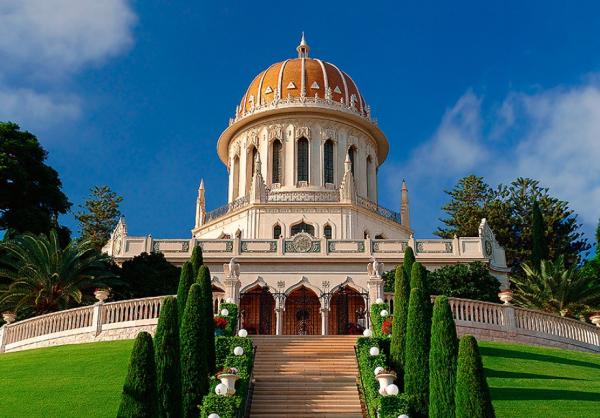Location
111111.jpg

Declaration of the Bab is a joyous Baha'i festival to celebrate the Bab's announcement in 1844 in Shiraz, Persia (now Iran), that he was the gate (which is the meaning of Bab) to the coming of the promised one of all religions.
The Baha’i Era began 174 years ago, in 1844 CE, when the Bab announced His mission to a young Shaykhi named Mulla Husayn. How exhilarating it must have been to live during a new revelation—to have been a devotee of Buddha, an apostle of Jesus, a disciple of Muhammad, a first believer in any of the Manifestations of God, attuned to the flood of spiritual power that each divine dispensation initiated!
This year, as Baha’is prepare to mark the anniversary of the Declaration of the Bab, we have new access to Baha’u’llah’s Writings on the exhilaration of the new era. In January, Days of Remembrance, translations of Baha’u’llah’s Writings on the Holy Days, was published. The compilation’s preface notes that the Declaration of the Bab and Ridvan were ordained by Baha’u’llah as the two Most Great Festivals.1
For the Declaration of the Bab, three tablets appear for the first time in English in Days of Remembrance. They convey the ecstasy of the Bab’s revelation and its unification of the realm of spirit and the world of humanity.
In the Tablet of the Bell (Lawh-i-Naqus), Baha’u’llah declares, “Ring out the bell, for the Day of the Lord is come and the Beauty of the All-Glorious hath ascended His blessed and resplendent throne.”2 In addition to the bell, a variety of other jubilant songs are invoked, metaphorically convening the spirits in paradise to celebrate the Declaration. A clarion sounds; strings thrum; a trumpet blasts; a nightingale warbles; a songster trills; spirits sing and chant; a peacock cries; a cockerel calls. A divine orchestra of instruments, voices, and birdsong swells with music to rejoice at the arrival of the “celestial Youth,” the Bab.
This heavenly symphony evokes for me the centrality of music to worship. Elsewhere, Baha’u’llah tells humanity that music serves “as ladder for your souls, a means whereby they may be lifted up unto the realm on high.”3 Music transports us beyond our mundane cares, toward the timeless, placeless realm depicted in the Tablet of the Bell. Nothing brings that peculiar chill to my skin—the stilling of self—more than the tones of worship: I recall solemn songs broadcast from a synagogue; the call of a muezzin; hymns resounding in a chapel; and harmonies and chanted prayers at Baha’i gatherings. Such devotional songs inspire, though I can’t speak the synagogue’s Hebrew, the mosque’s Arabic, the church’s Latin, the chanter’s Persian. The voice intoning love for the Holy Spirit conveys a message unconstrained by the typical limits of communication.
“And the nightingale sang sweetly: ‘Rejoice! This is the immortal Youth, Whose like the eyes of the favoured ones of Heaven have never beheld,’”4 avers a refrain in the Tablet of the Immortal Youth (Lawh-i-Ghulamu’l-Khuld). Baha’u’llah recounts a mystical narrative in which the gates of paradise open to release the spirit of the Bab (the immortal Youth) and the Maid of Heaven, a figure that recurs in Baha’u’llah’s Writings, including in an account of the divine revelation He received in 1852.5 The Maid unveils the face of the Bab, causing fervent rejoicing in paradise’s denizens and a spiritual reckoning for earth’s inhabitants. The repercussions of this new dispensation affect “all who are in heaven and on earth” alike,6 with an uplifting of all creation: “thus did utter nothingness attain the realm of eternity, and pure evanescence gain admittance into the court of everlasting life.”7 We on earth are invited to abandon mundane cares, and “even as luminous, heavenly birds, soar in the atmosphere of the celestial Paradise and wing your flight to the everlasting nest.”8
In both Tablets, Baha’u’llah identifies the Bab as a holy Youth. What is the significance of this title, I wonder? The Bab was literally youthful during His period of spiritual leadership. When He declared His Mission, He was only 24 years old. It is startling to think that He was younger than I am now when He announced a mission that would convulse Persia and ultimately, in paving the way for the spread of Baha’i teachings, the world. When He was executed, He was merely 30.
Besides the young age of the Bab during His six-year ministry, the title of “Youth” also points to His role in rejuvenating humankind’s spirituality. With Islam in its 1260th year, the Bab announced an update to God’s revelation. He commanded a religious revolution, with new teachings and new laws. Religion, renewed, became youthful again—ardent, dynamic, and sincere. The heroic exploits of the Bab’s disciples, the Letters of the Living, such as Mulla Husayn, Tahirih, and Quddus, radiate these traits of divine youthfulness. As Baha’u’llah proclaims in the third Tablet, with the revelation of the Bab, “the Spirit hath spoken and the realities of those who were created by the Word of God, the Mighty, the Exalted, have ascended unto Him.”9 Rejuvenated creation buoys upward toward new powers.
In the same Tablet, Baha’u’llah also declares, “It behoveth everyone on this day to rejoice with exceeding gladness, to clothe himself in his finest attire, to celebrate the praise of his Lord, and to give thanks unto Him for this most great favour.”10 So, in communities all over the globe, we rejoice with exceeding gladness at the unveiling of the immortal Youth in Shiraz nearly two centuries ago—a Declaration that initiated a new era, reinvigorating the possibilities for humanity’s spiritual ascent.
